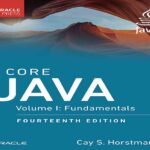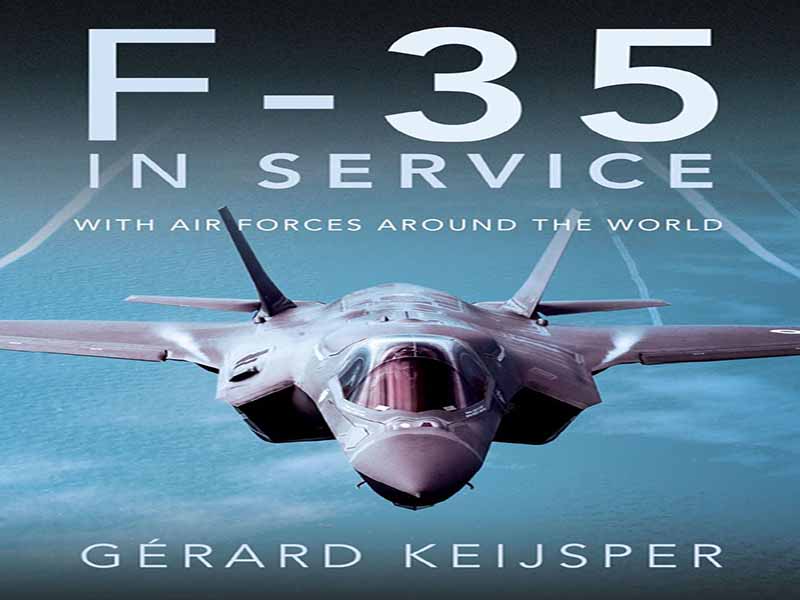- عنوان کتاب: F-35 In Service With Air Forces Around the World
- نویسنده: Gerard Keijsper
- حوزه: جنگنده
- سال انتشار: 2024
- تعداد صفحه: 751
- زبان اصلی: انگلیسی
- نوع فایل: pdf
- حجم فایل: 38.1 مگابایت
در طول دهه ۱۹۸۰، بریتانیا و ایالات متحده در مطالعات جنگنده مافوق صوت با قابلیت برخاست کوتاه و فرود عمودی (STOVL) برای جایگزینی هریر همکاری کردند. در سال ۱۹۸۶، ناسا و USMC، در کنار دیگر سازمانها، از DARPA درخواست کردند که آیا میتواند به این برنامه متوقف شده کمک کند یا خیر. DARPA وارد عمل شد و کار انجام شده از سال ۱۹۸۶ تا ۱۹۹۲ به عنوان فاز ۱ در نظر گرفته میشود. DARPA (آژانس پروژههای تحقیقاتی پیشرفته دفاعی) در سال ۱۹۹۲ درخواستی برای پیشنهادات (Rf P) برای برنامه نمایش فناوری هواپیمای ASTOVL (ASTOVL) صادر کرد. هدف، ساخت یک جنگنده مافوق صوت STOVL با وزن خالی ۲۴۰۰۰ پوند، مشابه F-18C، برای کنترل وزن و هزینه بود. هزینه یک جنگنده معادل وزن آن به طلا بود، ۱۵۰۰ دلار آمریکا برای هر پوند در سال ۱۹۹۳. از آن زمان به بعد، هزینه طلا افزایش یافته است. از آنجایی که سپاه تفنگداران دریایی ایالات متحده (USMC) با هواپیمای Bell Boeing V-22 Osprey که مورد حمله دیک چنی، معاون رئیس جمهور ایالات متحده، قرار گرفته بود، مشکل داشت، آنها نمیتوانستند به تنهایی از پس هزینههای یک برنامه پر سر و صدای دیگر برآیند. سرتیپ جورج مولر، معاون رئیس ستاد در امور نیازمندیها، فرماندهی نبرد هوایی ستاد، پایگاه نیروی هوایی لانگلی، از نیروی هوایی ایالات متحده (USAF)، پس از اعتراض به اینکه USAF پولی برای شروع یک پروژه دیگر ندارد، زیرا F-22 تقریباً انتخاب شده بود، از لاکهید/دارپا در مورد جایگزینی برای F-16 با برد بیشتر، همان بردی که USAF آرزویش را داشت، دریافت کرد. وضعیت مالی وخیم بود: همه انتظار داشتند که پس از فروپاشی اتحاد جماهیر شوروی، تنها چند سال قبل، سود صلح نصیبشان شود و نمیخواستند فشار بودجهای بر برنامه F-22 وارد شود. دارپا خاطرنشان کرد که نیروی دریایی ایالات متحده (USMC) نیز مشکل مشابهی دارد و احتمال همکاری وجود دارد، زیرا میتوان مخزن سوخت اضافی را با یک فن بالابر جایگزین کرد که قابلیت پرواز مافوق صوت را که نیروی دریایی ایالات متحده آرزوی آن را داشت، فراهم میکند. نیروی هوایی ایالات متحده به این برنامه دارپا علاقهمند بود تا این فناوری را تا پایان دهه 1990 فراهم کند. بسیاری تلاش کرده بودند تا یک جنگنده STOVL مافوق صوت توسعه دهند، اما شکست خورده بودند. کتابهای تاریخ پر از نمونههایی از آزمایشهایی است که تخیلی بودند، اما مشکلاتی مانند بلع گاز داغ، نیروهای مکش و نیروهای فواره باعث عدم موفقیت آنها شد. بلع گاز داغ و انتقال از پرواز معمولی به حالت شناور و بلند کردن وزن خود، سه مشکل بزرگ در توسعه یک جنگنده STOVL مافوق صوت موفق بودند. به همین دلیل، دارپا یک علامت X آزمایشی به نمونه اولیه، X-32، اختصاص داد. جنرال داینامیکس در حال آزمایش یک مدل پیشرانش اجکتور E-7 در مقیاس کامل در تونل باد 80 در 120 فوتی ناسا بود، اما در نهایت، یک طرح پیشرانش بالزننده مشابه طرح Ryan XV-5A ارائه داد. مکدانل داگلاس با پیشنهادی برای هر دو سیستم پیشرانش فن بالابر محور شفت (SDLF) و فن بالابر کوپل شده با گاز (GCLF) وارد عمل شد. نورثروپ سیستم پیشرانشی مشابه آنچه در یاکوولف یاک-38 روسی استفاده میشود، یعنی سیستم پیشرانش بالابر+کروز بالابر، ارائه داد. بوئینگ سیستم پیشرانش هریر به نام بالابر مستقیم را ارائه داد. طرحهای لاکهید و مکدانل داگلاس میتوانستند فن بالابر را برای جنگنده معمولی حذف کنند و نورثروپ میتوانست همین کار را با موتور بالابر انجام دهد. فقط بوئینگ این مزیت را نداشت و به همین دلیل، بال دلتا را انتخاب کرد که میتواند حجم سوخت بیشتری را در خود جای دهد. یکی از الزامات تعیینشده توسط دارپا این بود که یک مدل در مقیاس کامل باید توسعه داده شود تا ثابت شود که یک طرح میتواند وزن خود را در رژیم پرواز STOVL تحمل کند تا از تکرار ماجرای راکول اینترنشنال XVF-12A جلوگیری شود.
During the 1980s the United Kingdom and the USA had co-operated on supersonic Short-Take-Off-and-Vertical-Landing (STOVL) fighter studies to replace the Harrier. In 1986 NASA and the USMC, among others, asked if DARPA could help out the stalled programme. DARPA got involved and the work performed from 1986 till 1992 is considered phase 1. DARPA (Defense Advanced Research Projects Agency) issued a request for proposals (Rf P) for the ASTOVL (advanced-short-take-off-and-verticallanding) aircraft technology demonstration programme in 1992. The aim was to build a supersonic STOVL fighter with an empty weight of 24,000lb, similar to the F-18C, to keep weight and cost in check. The cost of a fighter was its weight in gold, US$1,500 per pound in 1993. Since then the cost of gold has increased As the United States Marine Corps (USMC) had trouble with the Bell Boeing V-22 Osprey which was under attack by US Vice President Dick Cheney, they could not afford another high-profile programme on their own. United States Air Force (USAF) Brigadier General George Muellner, deputy chief of staff for requirements, Headquarters Air Combat Command, Langley Air Force Base, received a presentation from Lockheed/ DARPA about a replacement for the F-16 with more range, the kind of range the USAF craved, after he objected that the USAF had no money to start another project since they had the F-22 just about selected. The financial situation was tight: everyone expected a peace dividend after the collapse of the USSR just a couple of years before and did not want to put budgetary pressure on the F-22 programme. DARPA pointed out that the USMC had a similar problem and that there could be a possibility of co-operation as the extra fuel tank could be replaced by a lift fan offering a supersonic capability for which the USMC yearned. The USAF was interested in this DARPA programme to provide the technology by the end of the 1990s. Many had tried to develop a supersonic STOVL fighter but had failed. The history books are full of examples of experiments that were imaginative, but problems such as hot-gas ingestion, suck-down forces and the fountain forces made them unsuccessful. Hot-gas ingestion and the transition from conventional flight to hover and lifting its weight had proved to be the three biggest problems in developing a successful supersonic STOVL fighter. For this reason, DARPA assigned an experimental X designation to the prototype, the X-32. General Dynamics had been testing a full-scale E-7 ejector propulsion model in the NASA 80 x 120-feet wind tunnel but, in the end, offered a fanin- wing propulsion concept similar to that of the Ryan XV-5A. McDonnell Douglas went in with an offer for both shaft-driven-lift-fan (SDLF) and gas-coupled-lift-fan (GCLF) propulsion systems. Northrop offered a similar propulsion system as used in the Russian Yakovlev Yak-38, the lift+liftcruise propulsion system. Boeing offered the Harrier propulsion system called direct lift. The Lockheed and McDonnell Douglas designs could remove the lift fan for the conventional fighter and Northrop could do the same with the lift engine. Only Boeing did not have this advantage and, for that reason, selected a delta wing which can hold a larger fuel volume. A requirement set by DARPA was that a full-scale model had to be developed to prove that a design could carry its weight in the STOVL flight regime to prevent a repeat of the Rockwell International XVF-12A.
این کتاب را میتوانید از لینک زیر بصورت رایگان دانلود کنید:



































نظرات کاربران